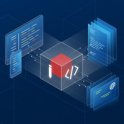What's the Key Aspect of Customer Experience?
The answer lies in consistent development of customer experience (CX) strategy. One of the key aspects of CX is customer communication management (CCM), a strategy to continually optimize document creation, data sources, delivery, feedback, downstream orchestration and evidencing. Essentially, all of the correspondence that makes up your brand and with current technology also capturing emotion, feedback, etc. It applies to batch-created transaction documents (invoices, account statements, meter readings, termination notices, rate offers, policies, delivery slips) as well as mass mailings (advertisements, campaigns), and individual correspondence created transactionally, such as communications created as the result of an online form submittal.
Customer communication management (CCM) includes all physical and electronic channels through which customers, partners, and suppliers come into contact with a company: e-mail, postal mail, telephone, social media platforms (Twitter, Facebook, Xing, LinkedIn, blog), various online forums, messenger services (SMS, WhatsApp, Viber, Instagram), web sites and online chat.
For more information about CCM and the next-gen version, CXM, which places the customer-facing document where it belongs – in the central of the customer experience, give us a call or drop us a note. We know how important communications are to your customer’s experience of your brand. We can help you future-proof this strategy to ensure that you are always communicating with the right customer at the right time via the right channel in the right medium – and that the communication is personalized and the data is protected.
Ready to future proof your customer-facing? click here










